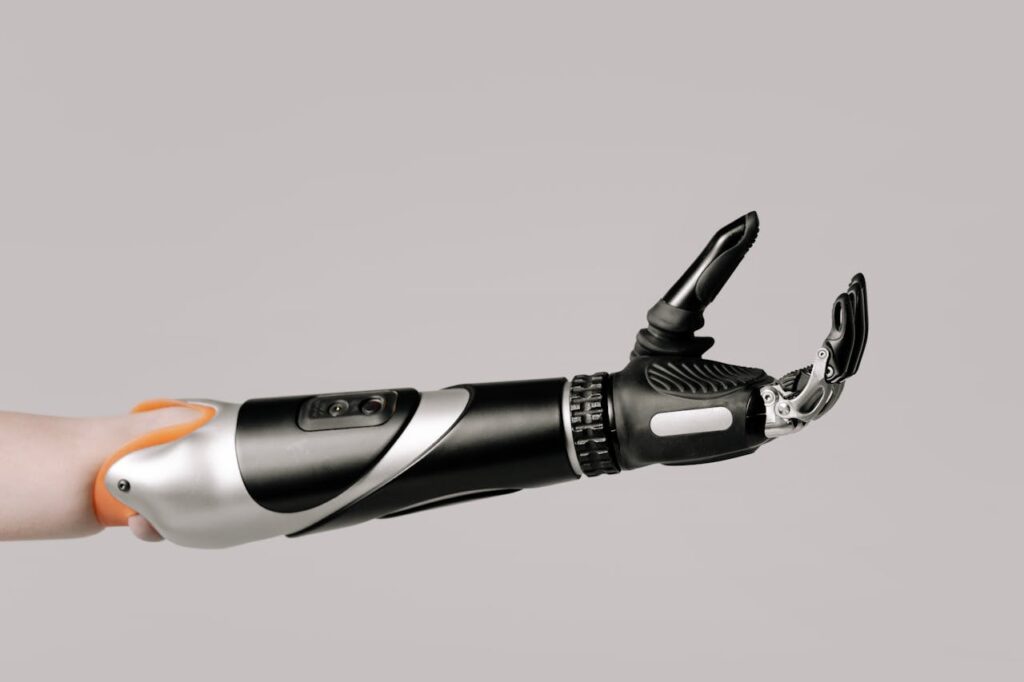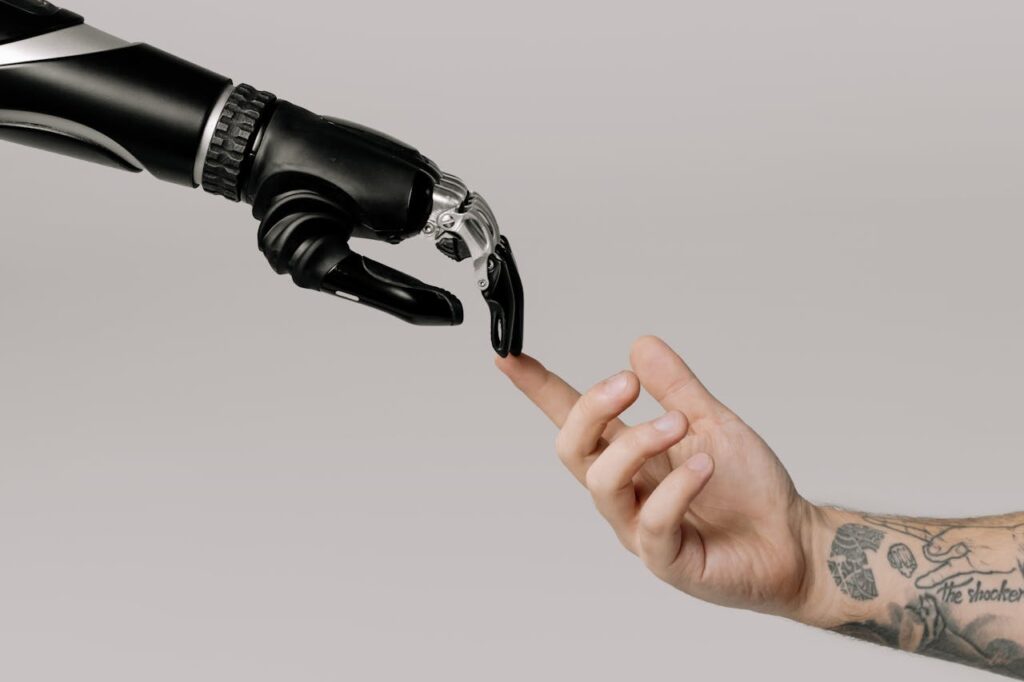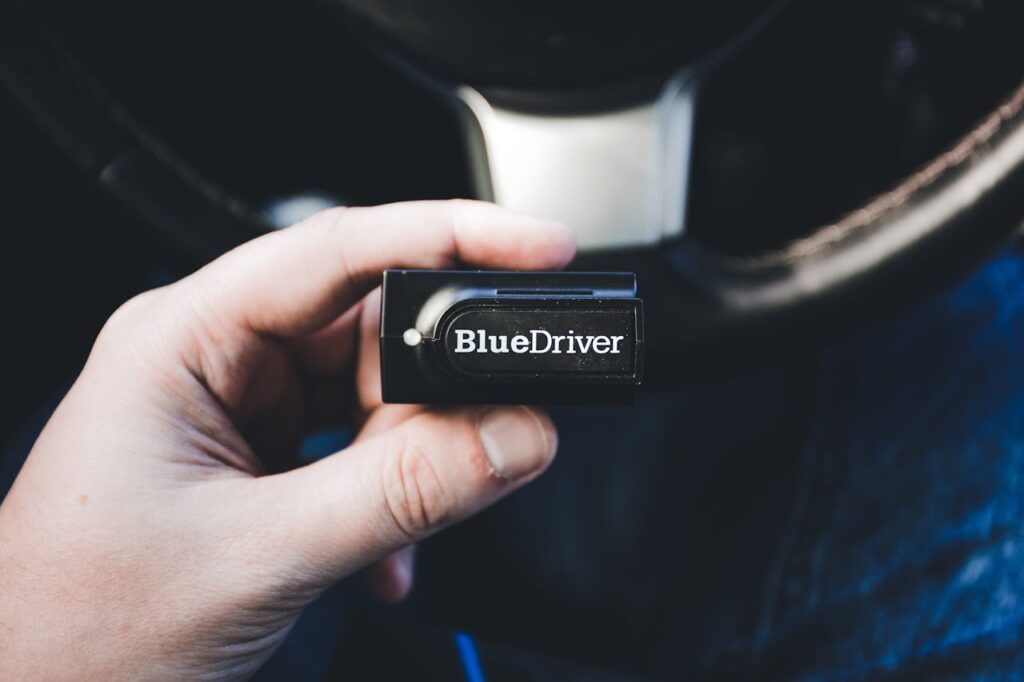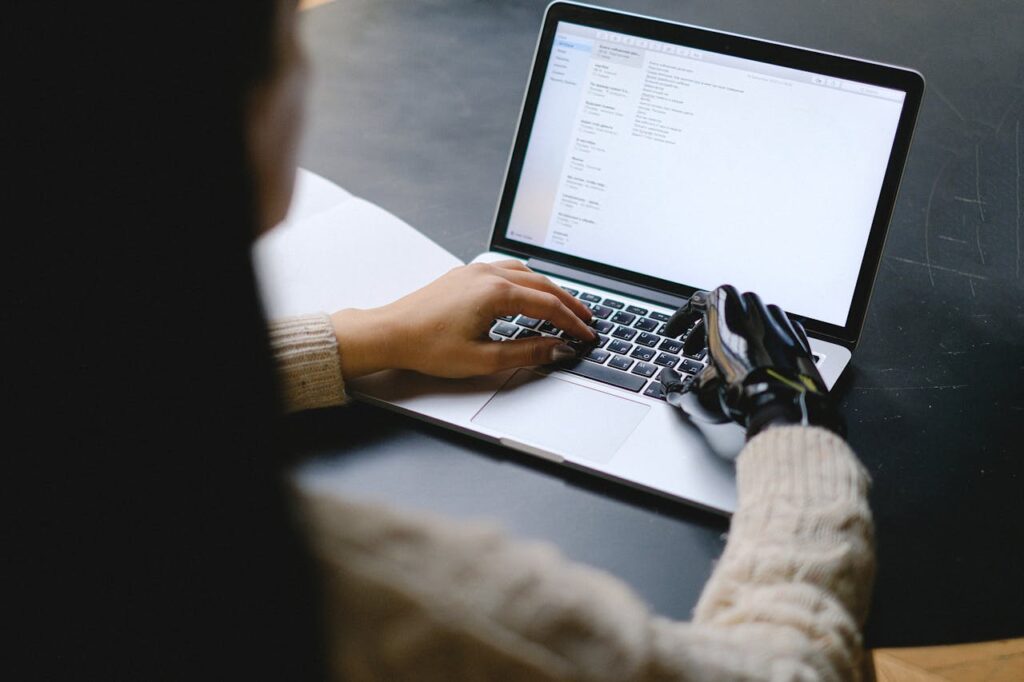Imagine a prosthetic limb that doesn’t just mimic movement but learns, adapts, and responds as though it were a natural extension of your body. This is the promise of artificial intelligence (AI) in prosthetic technology. AI is revolutionizing how prosthetics work, enabling smarter, more intuitive movements that adapt to the user’s needs in real time.
From predictive algorithms to machine learning, AI is transforming the landscape of prosthetics, making them more efficient, functional, and human-like. This article explores how AI is shaping the future of prosthetic movements, the technology behind these advancements, and the opportunities it creates for users and businesses alike.
The Role of AI in Prosthetics
Artificial intelligence is redefining prosthetics by introducing a level of sophistication that was once unimaginable. At its core, AI in prosthetics involves using machine learning algorithms and data-driven insights to create devices that can analyze, predict, and adapt to user behaviors and environmental factors.
This shift moves prosthetics from being purely mechanical tools to intelligent systems that feel more integrated with the human body. By learning from each user’s unique movement patterns, AI-powered prosthetics provide a tailored experience that improves functionality and comfort.

AI as the Brain Behind Movement
AI acts as the “brain” of modern prosthetic systems, interpreting data from sensors and translating it into precise movements.
Unlike traditional prosthetics, which rely on mechanical or pre-programmed functions, AI-powered devices are dynamic. They learn from the user’s movements, predict their intentions, and respond in real time.
For instance, in a myoelectric prosthetic arm, AI algorithms process signals from the user’s muscles to understand their desired action.
Over time, the system learns patterns and becomes more intuitive, allowing for seamless control of complex motions such as rotating a wrist or adjusting grip strength.
Businesses developing AI-powered prosthetics must prioritize the robustness of these algorithms. Ensuring that the system performs consistently across a wide range of activities is critical to building trust and satisfaction among users.
Collaborating with machine learning experts and conducting extensive testing can enhance algorithm reliability and adaptability.
Bridging the Gap Between the User and Device
The integration of AI in prosthetics aims to minimize the cognitive load required to operate the device. By making the prosthetic more intuitive, users can focus on their tasks rather than the mechanics of control.
For example, an AI-driven prosthetic leg can analyze a user’s gait patterns and adjust its movements automatically to provide a natural walking experience. This includes transitioning seamlessly between different terrains, such as stairs, gravel paths, or uneven surfaces.
For businesses, achieving this level of seamless interaction requires a deep understanding of human biomechanics.
Partnering with researchers in fields like kinesiology and neuroscience can provide insights into movement patterns and inform more effective AI training models.
Enabling Predictive and Adaptive Functionality
One of the most exciting aspects of AI in prosthetics is its ability to predict user intentions and adapt accordingly. This predictive functionality is made possible through advanced data analysis and machine learning.
For instance, an AI-powered prosthetic hand can anticipate the user’s next move based on past behaviors. If a user frequently alternates between a typing grip and a writing grip during the day, the prosthetic can learn to predict these transitions and adjust its positioning proactively.
Businesses can capitalize on this capability by integrating AI systems that not only adapt to individual users but also improve over time. This requires a focus on data collection and analysis, ensuring that each interaction contributes to the prosthetic’s learning process.
Transparency in how user data is handled is equally important, as it builds trust and complies with privacy regulations.
Enhancing Safety and Performance
AI is also instrumental in improving the safety and performance of prosthetic devices. By continuously monitoring the user’s movements and the environment, AI systems can identify potential risks and take preventative actions.
For instance, an AI-powered prosthetic knee could detect when a user is losing balance and adjust its angle to stabilize the user before a fall occurs. Similarly, smart sensors in a prosthetic arm could identify excessive strain during a lifting motion and reduce the applied force to prevent injury.
Businesses investing in AI for safety enhancements can set themselves apart by focusing on real-time responsiveness. Marketing these features as core benefits not only highlights the innovation but also resonates with users who prioritize reliability and peace of mind.
Expanding Accessibility Through AI
AI has the potential to democratize prosthetic technology, making advanced devices more accessible to users across diverse demographics.
By reducing the complexity of operation and providing built-in adaptability, AI-powered prosthetics cater to users with varying levels of experience and physical capability.
For businesses, this means designing prosthetics that accommodate a wide range of users—from children learning to navigate their first prosthetic to adults seeking tools that support active lifestyles.
AI systems that offer guided tutorials, self-calibration, and adaptive settings create a more inclusive user experience.
Additionally, businesses can explore scalable AI solutions that reduce production costs without compromising quality. For instance, integrating AI features into modular prosthetic systems allows users to access advanced functionality incrementally, making the technology more affordable.

Unlocking the Potential of AI-Powered Ecosystems
The role of AI in prosthetics extends beyond individual devices, forming the foundation of interconnected ecosystems. These ecosystems integrate AI-powered prosthetics with other smart technologies, such as mobile apps, wearable devices, and cloud-based platforms.
For example, a mobile app connected to a prosthetic could provide real-time feedback on performance metrics, suggest adjustments for better efficiency, and even schedule maintenance reminders.
Similarly, integration with wearable fitness trackers could help users monitor their physical activity and set personalized goals.
Businesses that invest in creating these ecosystems can deliver a comprehensive experience that adds value beyond the prosthetic itself.
Developing proprietary platforms or collaborating with existing tech providers can position the business as a leader in next-generation prosthetic solutions.
Understanding How AI Powers Movement
AI enhances prosthetic movements by processing vast amounts of data collected from sensors embedded in the device. These sensors monitor muscle signals, joint angles, and external conditions like terrain or temperature. The AI system analyzes this data in real time to make precise adjustments, ensuring smooth and responsive movement.
Learning and Adapting
Machine learning, a subset of AI, is the driving force behind prosthetics that adapt to individual users. By analyzing repeated actions, the prosthetic learns the user’s typical movements and preferences. Over time, it becomes more intuitive, anticipating the user’s intentions before they consciously make them.
For instance, an AI-powered prosthetic arm can learn to recognize the subtle muscle signals associated with gripping a glass of water versus holding a pen.
This allows for seamless transitions between tasks, making the prosthetic feel like an extension of the body rather than an external device.
Enhancing Balance and Gait
For lower-limb prosthetics, AI plays a critical role in maintaining balance and optimizing gait. By analyzing how the user distributes weight and moves across different terrains, the prosthetic can make micro-adjustments to ensure stability.
For example, walking on a sandy beach requires a different gait than walking on a flat pavement. An AI-powered leg prosthetic can detect these changes and adjust its stiffness, angle, or stride length accordingly. This adaptability reduces fatigue and enhances safety for the user.
The Technology Behind AI-Powered Prosthetics
AI-powered prosthetics rely on a combination of hardware and software to function effectively. Sensors, actuators, and processors work in harmony to collect data, interpret it, and execute precise movements.
Sensor Integration
Sensors are the foundation of AI-driven prosthetics, capturing the information needed for the system to learn and respond.
These include myoelectric sensors that detect electrical activity in muscles, gyroscopes that measure balance, and pressure sensors that track weight distribution.
The data collected by these sensors is sent to the prosthetic’s onboard processor, where AI algorithms analyze it in real time.
This rapid feedback loop allows the prosthetic to react almost instantly to changes in the user’s movements or environment.

Advanced Algorithms
AI algorithms translate raw sensor data into actionable insights. For example, a machine learning model might analyze thousands of steps to determine how a user’s gait changes when walking uphill versus downhill. The algorithm uses this knowledge to adjust the prosthetic’s movements automatically, ensuring a smoother experience.
Businesses developing AI-powered prosthetics must prioritize algorithm accuracy and efficiency. Collaborating with data scientists and software engineers can help refine these systems, ensuring that the prosthetic performs reliably under diverse conditions.
Real-World Applications
The benefits of AI in prosthetics extend beyond theory—they are making a tangible impact on users’ lives. From improving independence to enabling participation in sports, AI-powered prosthetics are opening new possibilities for individuals with limb loss.
Empowering Everyday Activities
For many users, the primary goal of a prosthetic is to regain independence in daily tasks. AI makes this possible by simplifying complex movements. Tasks like climbing stairs, opening jars, or typing on a keyboard become more manageable with the precision and adaptability of AI-powered prosthetics.
For instance, a prosthetic hand equipped with AI can adjust its grip strength based on the object it’s holding, ensuring that delicate items like eggs are handled gently while maintaining a firm grip on heavier objects.
Revolutionizing Mobility
Lower-limb prosthetics enhanced by AI are transforming mobility for users. These devices can adapt to varying terrains, inclines, and obstacles, making outdoor activities safer and more enjoyable.
For example, AI-powered knee joints can dynamically adjust stiffness and resistance, allowing for smoother transitions between standing, walking, and running. This not only improves comfort but also reduces the risk of falls.
Advancing Sports and Recreation
Athletes with prosthetics are benefiting immensely from AI technology. Running blades, adaptive cycling prosthetics, and climbing aids equipped with AI allow athletes to perform at higher levels by optimizing their movements for speed, precision, and endurance.
Businesses that develop AI-powered prosthetics for sports can tap into a growing market of adaptive athletes while contributing to a broader culture of inclusivity in sports.
Opportunities for Businesses in AI-Powered Prosthetics
The integration of AI into prosthetics presents a transformative opportunity for businesses. As the demand for smarter, more responsive devices grows, companies that invest in AI-driven solutions can establish themselves as leaders in the industry. By prioritizing innovation, user experience, and accessibility, businesses can unlock new markets and create lasting impact.
Customization at Scale
One of the most significant advantages of AI-powered prosthetics is their ability to adapt to individual users. For businesses, this adaptability eliminates the need for overly complex customization processes. Instead, AI allows for scalable solutions that cater to diverse needs.
For instance, a single prosthetic model equipped with AI can adjust its functionality based on the user’s lifestyle—whether they’re an office worker, an athlete, or someone with an active outdoor hobby.
This scalability reduces production costs while offering personalized experiences, making high-tech prosthetics accessible to a broader audience.
To maximize this potential, businesses can invest in modular designs that incorporate AI as a core feature.
These systems allow users to upgrade or modify their prosthetics without needing an entirely new device, creating opportunities for recurring revenue and long-term customer engagement.
Expanding Accessibility Through Cost Reduction
While AI-powered prosthetics offer advanced functionality, they often come with higher production costs. Making these devices accessible to more users requires businesses to adopt cost-efficient manufacturing techniques and explore alternative materials.
Technologies like 3D printing can play a pivotal role in reducing production expenses. By leveraging additive manufacturing, businesses can produce intricate prosthetic components more quickly and affordably.
Coupled with AI integration, these components provide the same high level of performance as traditionally manufactured parts.
Additionally, partnerships with healthcare providers, non-profits, and government programs can help subsidize costs for end-users.
Businesses that prioritize accessibility will not only expand their market reach but also build a reputation for inclusivity and social responsibility.
Developing Ecosystems Around Smart Prosthetics
The future of AI-powered prosthetics extends beyond the devices themselves. Businesses can create ecosystems that enhance the user experience by integrating prosthetics with complementary technologies.
For example, mobile apps can serve as companion tools, allowing users to monitor their prosthetic’s performance, adjust settings, and access tutorials or troubleshooting guides.
These apps can also collect valuable data for businesses, providing insights into how users interact with their prosthetics and identifying areas for improvement.
Wearable devices, such as smartwatches or fitness trackers, can further enhance this ecosystem. By syncing with AI-powered prosthetics, these devices provide real-time feedback on metrics like activity levels, posture, and gait, empowering users to make informed decisions about their health and mobility.

Redefining User Experiences
AI-powered prosthetics are reshaping how individuals perceive and interact with their devices. For users, these advancements represent more than technical innovation—they signify a profound improvement in quality of life.
Building Trust Through Reliability
The real-time adaptability of AI prosthetics builds trust between the user and their device. When a prosthetic responds smoothly to changing conditions, users feel more confident and secure in their daily activities.
For businesses, ensuring reliability is paramount. This involves rigorous testing under diverse conditions to guarantee that the prosthetic performs consistently.
Collaborating with users during the testing phase can provide valuable feedback, helping businesses fine-tune their products and address potential issues before launch.
Enhancing Emotional Connection
Prosthetics that feel intuitive and responsive foster a deeper emotional connection between the user and their device. This connection goes beyond functionality, impacting the user’s self-esteem and sense of independence.
Businesses can amplify this connection by incorporating customization options that reflect the user’s personality and preferences.
From color choices to unique finishes, these small details contribute to a prosthetic that feels truly personal.
The Future of AI in Prosthetics
The integration of AI into prosthetics is just the beginning. As technology continues to advance, the possibilities for smarter prosthetic movements will expand, offering even greater benefits to users.

Neural Integration for Seamless Control
One of the most promising developments in AI-powered prosthetics is the integration of neural interfaces. These systems allow prosthetics to communicate directly with the user’s nervous system, enabling movements that feel natural and intuitive.
For example, an AI-powered prosthetic arm with neural integration could recognize subtle brain signals and execute precise actions, such as picking up a fragile object or typing on a keyboard.
Businesses investing in neural integration technology will play a pivotal role in shaping the next generation of prosthetics.
Predictive Maintenance and Long-Term Performance
AI also offers opportunities for improving the longevity of prosthetic devices. By monitoring usage patterns and wear-and-tear, AI systems can predict when maintenance is needed, alerting users before issues arise.
This predictive maintenance capability enhances user satisfaction and reduces downtime, ensuring that prosthetics remain reliable over time.
Businesses that incorporate this feature into their products can offer comprehensive service packages, creating additional value for users.
Strategic Advice for Businesses
The integration of AI into prosthetics represents a game-changing opportunity for businesses. However, succeeding in this transformative space requires more than technological innovation—it demands a strategic approach that aligns with user needs, industry trends, and long-term goals.
Prioritize Scalability Without Sacrificing Quality
One of the biggest challenges for businesses in the AI prosthetics sector is achieving scalability while maintaining the quality and performance users expect.
Advanced prosthetics often come with high development and production costs, which can limit accessibility and adoption.
To overcome this, businesses should invest in manufacturing technologies that support mass customization.
Techniques like 3D printing and modular design allow for the efficient production of prosthetics tailored to individual users without significantly increasing costs.
Build Cross-Industry Collaborations
AI-powered prosthetics sit at the intersection of healthcare, robotics, and data science. To succeed in this space, businesses must embrace cross-industry collaborations that combine expertise from multiple fields.
Partnering with AI researchers, material scientists, and rehabilitation specialists can accelerate innovation and ensure that products address real-world challenges.
For instance, working with neurologists can provide insights into how the brain and nervous system interact with prosthetic devices, informing the design of more intuitive neural interfaces.
Create a Robust Data Ecosystem
AI-powered prosthetics rely heavily on data to function effectively. By analyzing user interactions, environmental conditions, and device performance, AI systems can learn and adapt over time.
Businesses must focus on creating a robust data ecosystem that supports this learning process while ensuring privacy and security.
Investing in secure cloud infrastructure is essential for storing and processing large volumes of data.
Cloud-based systems allow for seamless updates and enable users to access their prosthetic’s data via mobile apps or web platforms.
Businesses can also use this data to gain insights into user behavior, identifying areas for improvement or new product opportunities.
Focus on Training and Education
The effectiveness of AI-powered prosthetics depends not only on the technology but also on the user’s ability to operate and adapt to the device. Businesses must prioritize training and education to ensure a positive user experience.
Developing interactive tutorials, virtual training sessions, and gamified learning platforms can help users familiarize themselves with the features of their prosthetic.
These tools should cover everything from basic operation to advanced customization options, empowering users to maximize the device’s potential.

Leverage Marketing to Highlight AI’s Benefits
Effective marketing is crucial to building awareness and trust in AI-powered prosthetics.
Users may be hesitant to adopt new technology without a clear understanding of its benefits, so businesses must communicate the value of AI in a relatable and compelling way.
Storytelling is a powerful tool for showcasing the impact of AI-driven prosthetics.
Sharing user testimonials, success stories, or videos demonstrating the device in action can resonate with potential customers and highlight real-world applications.
Innovate for the Future
The field of AI-powered prosthetics is still evolving, with new technologies and capabilities emerging rapidly. To remain competitive, businesses must adopt a forward-thinking mindset, continually exploring innovations that push the boundaries of what prosthetics can achieve.
This includes investing in areas like neural integration, where AI systems interface directly with the user’s brain, enabling intuitive and natural movements.
Exploring sustainability in prosthetic design—such as using recyclable materials or developing devices with longer lifespans—can also appeal to environmentally conscious consumers.
Create Community-Centric Support Systems
AI-powered prosthetics are more than devices—they are enablers of independence and community participation.
Businesses should focus on creating support systems that go beyond the initial purchase, fostering long-term engagement and loyalty.
Offering maintenance packages, regular software updates, and responsive customer service ensures that users feel supported throughout their journey.
Creating online communities where users can connect, share experiences, and learn from one another can further enhance the sense of belonging.
Conclusion
AI is revolutionizing prosthetics by enabling smarter, more intuitive movements that adapt to the unique needs of each user. These advancements are not just about functionality—they are about restoring independence, confidence, and quality of life.
For businesses, AI-powered prosthetics represent a transformative opportunity to innovate and lead in a rapidly evolving market.
By prioritizing user experience, embracing emerging technologies, and expanding accessibility, companies can create life-changing solutions that redefine what prosthetics can achieve.




Pingback: Unleashing Innovation: The Impact of AI in Prosthetics - TechAdvices